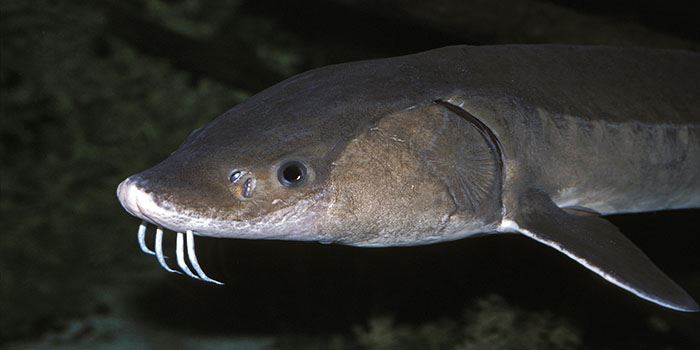Fishy Business along the Towpath and Beyond

by: Patrick Bronson, park programming interpreter
What kinds of denizens may be lurking beneath the frozen surface of the mighty Maumee? Here are some fun facts about a few of the larger fish species that call this river home.
No discussion about the Maumee River would be complete without mentioning Walleye. This fish gets its name from its outward-pointed, glassy eyes which give it an adaptive advantage in low light, such as at night or in murky waters. The Maumee and Lake Erie provide good habitat for this aquatic predator. As adults they are primarily piscivorous (fish-eating), with diets consisting primarily of shad, ciscoes, and small perch. Their preferred method of hunting is to wait in concealment and then ambush their prey. Young Walleye typically eat small aquatic invertebrates such as scuds, leeches, or crayfish. Toledo has become famous for the annual Walleye run. After winter, when the waters warm to between 43-50 degrees F, tens of thousands of these fish travel up the Maumee River to spawn. A female may lay as many as 500,000 eggs on rocks, but, like any fish, provides no parental care for the young. Walleye have a promising future in our region, thanks to conservation efforts from various agencies and the support of anglers.
Stroll by the Providence Dam or Historic Isaac Ludwig Mill in prime fishing season and you are likely to find numerous anglers patiently waiting for their prey to bite. Perhaps the most common quarry for this section of the river is the Channel Catfish. They can weigh up to 50 pounds, although most catches average about 10 pounds and a length of around 25 inches. Like most other members of its Order, Siluriformes, Channel Catfish have smooth skin, barbels, and keen senses of smell and taste for hunting prey. In fact, their acute sense of taste can detect just a few amino acids per 100 million in water! As generalist feeders, their diet includes fish, frogs, algae, snails, crustaceans, snakes, aquatic plants, clams, and even small birds or mammals. Not dependent on any singular food source, Channel Catfish remain well-fed in Providence waters all year-round. They are also perfectly adapted to this Metropark because they can detect by scent food in turbid waters with low-visibility, and because their swim bladders allow them to thrive in places like the canal that can be very low in oxygen, especially during hot days of summer.
Historically, the largest fish to have inhabited the Maumee River was the Lake Sturgeon. Growing to a length of over seven feet and weighing in excess of 200 pounds, the sturgeon has no equal in the Great Lakes when it comes to size. What’s more, Lake Sturgeon belong to the Acipenseridae family, which can be traced back to fossil records from the late Cretaceous Period 75 million years ago! This impressive fish has a cartilaginous skeleton much like those of sharks. Unlike most sharks, however, the sturgeon is a benthic feeder – meaning that it finds its food on the bottoms of lakes and rivers. Given its particular niche within the food web, Lake Sturgeon make an ideal potential control to invasive mollusks such as Quagga and Zebra mussels. Unfortunately, Lake Sturgeon disappeared from the Maumee River sometime in the early 1900s, with an unlikelihood to return on their own, since newly hatched fry imprint on the river they are born in, and return there to spawn 15 to 25 years later when they have finally matured. But thanks to the efforts of partners in conservation such as the U.S. Fish & Wildlife Service and the Toledo Zoo, Lake Sturgeon returned to the Maumee River in 2018, after an absence of nearly a century. With further conservation and habitat restoration, this species might once again regain its place in our local ecosystem.